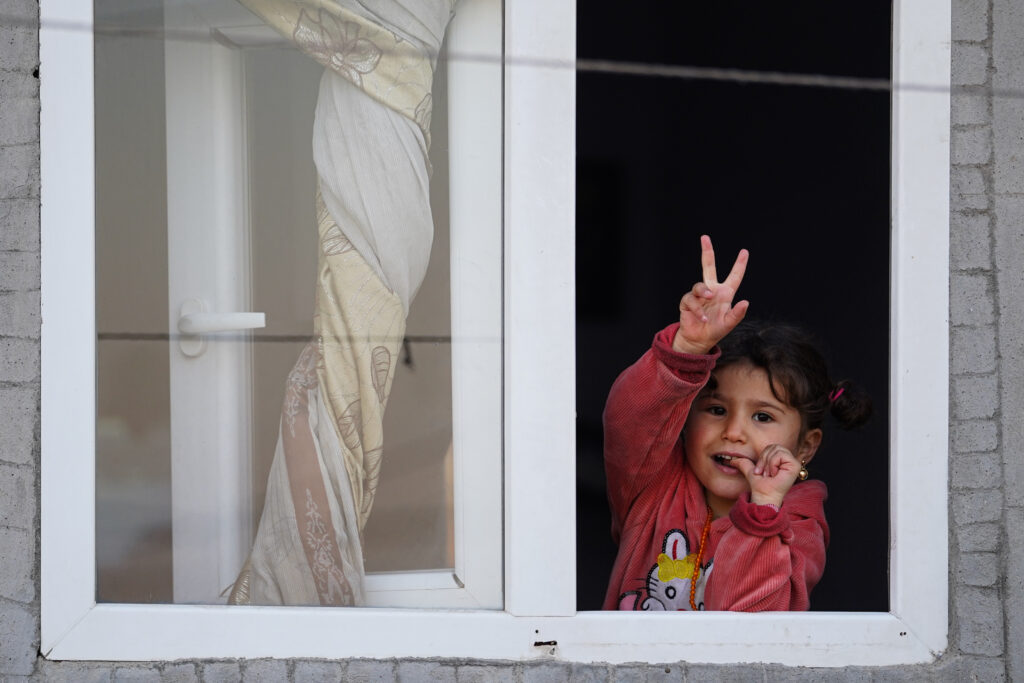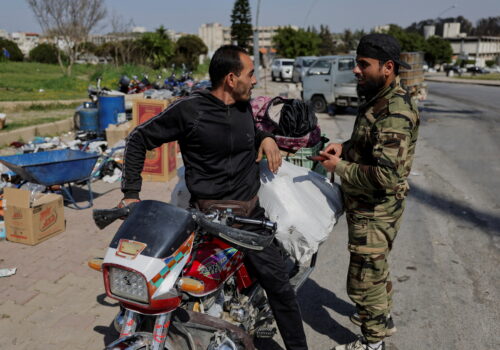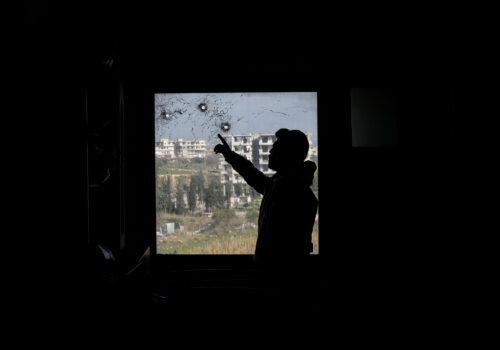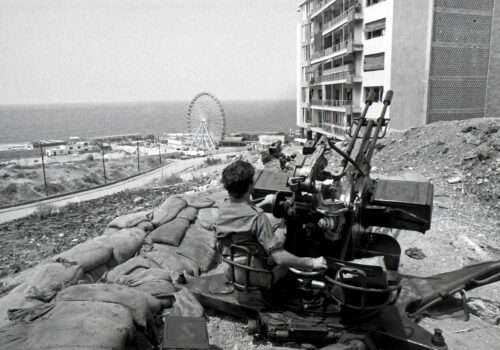Each year, World Refugee Day is a powerful reminder of the global displacement crisis and the international community’s responsibilities toward those forced to flee. For Syrians this year, the significance of this day has taken on new weight following the fall of Bashar al-Assad’s regime on December 8, 2024. For the first time in more than a decade, millions of displaced Syrians are confronting a genuine, though deeply uncertain, possibility of return. Assad, whose rule was widely viewed as a core driver of the refugee crisis, is gone. His departure has reignited conversations about return, reconstruction, and the long road toward national recovery. Yet, while the political shift brings new hope, it also highlights the complex realities that still define the Syrian landscape.
As of 2024, more than 6.1 million Syrians remain refugees, primarily hosted in Türkiye, Lebanon, Jordan, Iraq, and Egypt, while another 7.4 million are internally displaced within Syria, making it one of the most significant displacement crises in the world. Türkiye hosts the largest Syrian refugee population globally, with over 3.2 million registered refugees, followed by Lebanon and Jordan.
Since Assad’s ouster, Syrian refugees’ attitudes toward return have evolved significantly. Before December 2024, returning was widely considered unthinkable. The regime’s repression, continued conflict, and widespread destruction left few safe paths home. However, Assad’s fall has introduced new variables: political transition processes, reconstruction dialogues, and signs of renewed international engagement in Syria’s future. Refugees who once felt locked between hostile host environments and an unwelcoming homeland are beginning to reassess the possibility of going back, though often with cautious scepticism.
Still, expectations remain restrained. While many displaced Syrians are more open to the idea of return, trust has not automatically followed Assad’s departure. Concerns over ongoing security risks, fragmented governance, unresolved property disputes, and economic uncertainty cast long shadows. Many refugees, particularly those who fled regime-held areas, remain wary of what “post-Assad” Syria will mean in practice. The political breakthrough has shifted the conversation, but has not fundamentally changed the underlying conditions that drive displacement.
Understanding why Syrians fled and what will bring them back
Any serious approach to refugee return must start with a nuanced understanding of why Syrians left. These motivations are not monolithic; they reflect overlapping waves of displacement shaped by violence, repression, and economic collapse. Broadly, Syrian refugees can be understood in three overlapping categories.
The first group comprises individuals who fled political persecution early in the conflict. These include activists, civil society leaders, and community organisers targeted by the regime’s security apparatus. Though smaller in number, this group has been disproportionately influential, often settling in Europe or the United States between 2011 and 2012. Many are now considering a return, driven by a strong sense of civic duty and a desire to help shape Syria’s emerging post-conflict institutions.
The second group fled primarily for physical safety rather than direct political targeting. These are families and individuals who escaped regions devastated by heavy bombardment and front-line fighting, particularly between 2012 and 2015. Most were resettled in neighbouring countries like Turkey, Jordan, Lebanon, Iraq, and Egypt. Their return is contingent on core stability: physical security, reliable infrastructure, functioning schools and hospitals, access to jobs, and the reestablishment of basic governance.
The third group includes refugees whose flight was driven by economic necessity, often compounded by conscription risks. Many originally lived in regime-held areas where livelihoods collapsed. This wave intensified after 2015, with many moving onward to Europe following years of hardship in first-asylum countries. For these Syrians, decisions around return are pragmatic and economically driven, shaped by calculations about jobs, services, and cost-of-living factors relative to their current host environments.
Understanding these different trajectories is essential. Refugee return is not simply a humanitarian issue but is profoundly political and economic. If managed well, return can become a powerful reconstruction engine, bringing back skilled labour, diaspora capital, and international networks. Contrary to prevailing narratives, the Syrian refugee population includes entrepreneurs, technicians, educators, and trained professionals. Unlocking this potential will be central to any sustainable recovery strategy.
Who is returning and why?
Since Assad’s fall, return figures have increased noticeably, but not consistently, for reasons that reflect improved conditions in Syria. Between 2016 and mid-2025, roughly 1,200,000 Syrians had returned, mostly voluntarily, though coercion was a factor in some host countries. The most significant spike in refugee returns occurred in late 2024, when approximately 320,000 Syrians returned to Syria from Lebanon amid mounting hostility, economic collapse, and fallout from the Israel-Gaza war. Regarding Turkiye, over 800,000 Syrian refugees there have returned to Syria since 2017, many to Turkish-controlled areas in northern Syria, often under mounting domestic political pressure and varying degrees of coercion.
In contrast, Jordan has maintained a more balanced posture. Approximately 62,500 refugees returned between the reopening of the Nasib border from December 2024 till April 2025, with returns largely voluntary. Meanwhile, Europe, where nearly one million Syrians reside (mainly in Germany and Sweden), has seen minimal movement. Adherence to non-refoulement principles has meant that returns remain low, with about 464 returning from Germany by mid-2025, with even fewer from elsewhere. Denmark remains a notable outlier, having revoked protection for roughly sixty-nine Syrians since 2019, though actual removals remain limited due to legal and logistical constraints.
Motivations for return are, in most cases, shaped less by pull factors in Syria and more by push factors in host countries. Refugees cite deteriorating economies, increased legal pressure, and rising xenophobia as key reasons. Emotional ties to family and land continue to play a role, but survival often overrides sentiment. Surveys suggest that nearly 37 percent of Syrian refugees now hope to return within five years, though mainly because life in exile is becoming untenable, rather than because Syria is perceived as safe or welcoming.
Why return remains difficult
The barriers to return are profoundly structural. Syria’s built environment has been decimated by years of war. As of 2024, the United Nations Development Program (UNDP) and the World Bank estimated that over 325,000 homes were destroyed and more than a million were damaged. Damascus suburbs, Homs, Aleppo, Idlib, and Deir ez-Zor are the most affected urban areas.
Reconstruction efforts lack reliable data. Without localised baseline assessments, policy and decision makers struggle to align recovery projects with the actual needs of returnee communities. This disconnect weakens investment efficiency and risks misallocating scarce resources.
In May 2025, Syria signed a seven billion dollar energy deal with a Qatari-led consortium to build combined-cycle gas turbines and solar plants, aimed at more than doubling electricity output. While this sounds promising, the agreement does little to address the shattered transmission infrastructure. Two-thirds of the grid remains inoperable, with damaged towers and looted cables impeding delivery. As a result, even with new generation capacity, electricity often fails to reach homes, clinics, or businesses. Citizens still rely on expensive alternatives such as solar energy, local storage units, or polluting generators.
SIGN UP FOR THIS WEEK IN THE MIDEAST NEWSLETTER
To make refugee return viable, access to electricity is not a luxury, but a fundamental requirement. Without power, homes remain uninhabitable, clinics and hospitals cannot function, and schools cannot operate. The infrastructure deal with Qatar will remain symbolic unless complemented by immediate and strategic investment in electricity transmission and distribution. A first step must be the implementation of localised baseline assessments to identify infrastructure and service gaps in the specific areas where returnees are expected to settle. These assessments will allow reconstruction and development programs to respond to the actual needs of communities rather than top-down assumptions.
In parallel, targeted funding should be mobilised to rebuild the grid, including transformers, feeder lines, and household-level connections. However, repairing the physical network will not be enough. Introducing and enforcing anti-looting and security measures to protect vital infrastructure from damage and theft is equally essential. Without these safeguards, even restored systems may not remain functional for long.
Equally urgent is the restoration of water and sanitation infrastructure, which deteriorated sharply over the years of conflict, mismanagement, and recurring drought. Public water systems are no longer operational in many areas, forcing communities to rely on expensive private water trucks or unsafe, contaminated sources. Sanitation facilities have collapsed in several towns and informal settlements, leading to public health risks, particularly for children and the elderly. Addressing these challenges requires repairing physical infrastructure such as pumping stations, pipelines, and sewage systems, as well as implementing water governance reforms and drought resilience strategies, especially in water-stressed regions like the Euphrates basin.
The communication infrastructure has also suffered extensive damage. Mobile networks are unreliable or absent in large parts of rural and contested areas, cutting communities off from essential information, services, and remittance channels. Accessing cellular networks, the internet, and mobile financial services is indispensable for returning families. Returnees are isolated, economic transactions are hindered, and public service coordination is severely disrupted without reliable communications. Rebuilding Syria’s digital backbone must go hand in hand with efforts to modernise its physical infrastructure. The Ministry of Communication and Innovation has recently published a public Request for Interest in constructing a regional backbone internet connection with Turkey, Iraq, Lebanon, Jordan, Saudi Arabia, and Cyprus called SilkLink. Even though no announcements have been made on the potential contractor and investor, this ambitious project has the potential to solve the acute problem of global information connectivity.
Indeed, the private sector must be actively involved, not only as contractors but as long-term partners. Public-private partnerships can provide a sustainable model for managing distribution, overseeing repairs, and maintaining service quality over time. Only with this combination of strategic planning, financial investment, and operational accountability will infrastructure restoration translate into meaningful change for returnees.
Host country pressure and international responsibility
Similarly, policies in host countries will continue to shape the nature and pace of returns. In Lebanon, the environment has grown increasingly coercive. Syrian refugees face legal and physical insecurity, marked by security raids, evictions, and steadily shrinking access to aid and employment. Since December 2024, these pressures have escalated to a point where many refugees feel they have no choice but to leave. For too many, return to Syria is less a voluntary act than the result of sustained duress.
To address this inconsistent landscape, international actors must reinforce a common rights-based standard for refugee return. This begins with improving oversight. Neutral monitoring mechanisms should be expanded within host countries to track and report on violations, especially cases of coerced or forced return. Simultaneously, host states and donors should revisit and refine “go-and-see” programs, ensuring they are implemented transparently and designed to empower refugees with accurate information and agency over their decisions. Participating in these visits must not threaten legal status.
More broadly, aid to host countries should be conditional upon compliance with refugee protection norms. Donor funding should be contingent on halting practices that lead to coerced returns and improving the legal standing of refugees within their temporary homes. Within Syria itself, reintegration support must be robust and rights-based. This includes direct assistance in the form of cash grants, livelihoods programming, psychosocial support, and legal aid for property recovery—all structured within transparent, multilateral frameworks. Reintegration planning should also incorporate capacity-building initiatives for local councils and municipal authorities, ensuring they can deliver basic services and absorb returning populations. Through technical support, remote mentorship, and investment mobilization, partnerships with the Syrian diaspora can play a vital role in reinforcing these efforts and closing institutional gaps.
Sinan Hatahet is a nonresident senior fellow for the Syria Project in the Atlantic Council’s Middle East Programs and the Syrian Forum’s vice president for investment and social impact.
Further reading
Tue, Jun 10, 2025
Why DDR programs are the missing link to Syrian stability
MENASource By
With the end of Western sanctions, Syria faces a rare opportunity to address the imbalances of the post-conflict period.
Wed, May 28, 2025
Sectarianism, social media, and Syria’s information blackhole
MENASource By
Since Assad’s December ousting, Syrians have struggled to sift the truth from fake claims about security incidents across the country.
Thu, May 22, 2025
Lebanon’s 1982 war reverberates in Israel’s Syria campaign
MENASource By Sinan Hatahet
Israel's ongoing intervention in Syria appears different from its 1982 invasion of Lebanon—but beneath the surface, parallels are striking.
Image: A child seen posting a peace fingers sign at her window at Domiz camp for Syrian Kurdish refugees about 18km southwest of Duhok city in the Kurdistan Region. Duhok province hosts 92,000 Syrian refugees out of 275,000 refugees in the Kurdistan Region of Iraq who have migrated since the outbreak of the Syrian revolution in 2011. Most of them refuse to return to their country despite the fall of the Bashar al-Assad regime for fear of the outbreak of armed conflicts between the Syrian Democratic Forces (SDF) and the Turkish-backed Syrian National Army or with Hayat Tahrir al-Sham and other opposition forces that have taken control of the capital, Damascus.




